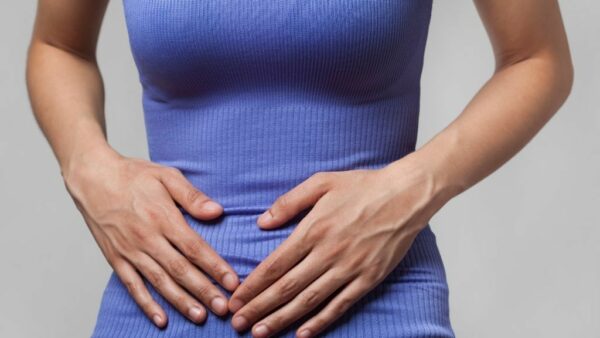If you experience flatulence, stomach cramps, diarrhoea or indigestion after eating fruit or sweet foods, it is possible that you have Fructose sensitivity. If you cannot tolerate fruit sugar you must eat more consciously, you must get to know the features of Fructose in other words fruit sugar. You should have a Fructose test even in case of little symptoms which can find out if you have Fructose malabsorption, Fructose allergy or Fructose intolerance. Find out what the symptoms are caused by! In our article, we show you the symptoms of Fructose sensitivity and the details of the Fructose diet.
In this article you can find information about the followings:
- What is Fructose?
- What contains and what does not contain Fructose?
- How much fruit sugar is healthy?
- What are the symptoms of the Fructose sensitivity?
- About the Fructose intolerance test
- The essence of the Fructose-free diet
What is Fructose?
Fructose is fruit sugar in everyday language. Considering its chemical structure, it is a carbohydrate, a monosaccharide. It is not just in fruits but it is used widespread by the food industry so we should choose smartly from the manufactured foods and drinks. You should know about its functioning, that it is absorbed from the intestine and with the help of an enzyme it transforms into Glucose, grape sugar. Fructose and Glucose create together the sugar called saccharose which decomposition in the body the sucrase enzyme enzimis responsible. If this enzyme is missing the fruit sugar cannot be absorbed totally. It gets into the large intestine undigested and starts to ferment there. This causes abdominal and stomach problems.
The fruit sugar sensitivity can be treated by an enzyme that helps to break down Fructose and Fructose-free diet. Fructose malabsorption is the medical name of the problem when the fruit sugar cannot be absorbed totally. It can occur at any age, up to 30-40 percent of the European people can be affected by it slightly or more seriously. Fructose intolerance is a congenital hereditary disorder that causes serious symptoms as early as infancy.
What contains and what does not contain Fructose?
Fruit sugar is surely in fruits and fruit juices, sweeter vegetables, sweets, syrups, sweeteners, honey, flavoured dairy products, cold cuts, canned foods, deep-frozen foods, finished goods and alcohol.
The Fructose content is high in most of the fruits: dried fruits, blueberry, banana, grape, pomegranate, apple, pineapple, cherry, sour cherry, melon, mandarin, watermelon, orange, peach, black currant, medlar, quince, mango. Among vegetables beetroot, carrot, parsley root, cabbage, pumpkin contain a high amount of fruit sugar.
Mushroom, potato and lentils can be eaten safely because there is no Fructose in it is. Egg and au naturel grain and dairy products are Fructose free as much as rice, millet, bulgur, couscous and amaranth. There is no Fructose in meat but cold cuts can contain it.
Take a look at the labels of the products and they contain Fructose if you read this: corn syrup, juice concentrate, Fructose-Glucose inverted sugar syrup, maple syrup, treacle, sorbitol inulin, glycitol, oligofructose, fructooligosaccharide.
How much fruit sugar is healthy?
Even a healthy person cannot eat sweet fruit and sweetened finished products continuously because sooner or later he/she will battle against overweight and digestion problems. Do not exceed the maximum daily intake of 50 grams of Fructose according to medical indications!
What are the symptoms of Fructose sensitivity?
Fructose malabsorption occurs after eating. The main symptoms are indigestion, increased gasification, flatulence, diarrhoea and abdominal pain. Headache, front sensitivity, tiredness, stress, fullness feeling after eating can also happen. If you do not know what causes discomfort feeling after eating it is worth thinking of fruit sugar. Do not eat food products sweetened with Fructose and lessen fruit consumption.
About the Fructose intolerance test
The Fructose intolerance test is done by a fully pain-free examination in the gastroenterological centres. This Fructose intolerance test is called H2 is the hydrogen exhalation test. Its essence is that you drink a glass of liquid containing Fructose that during 2-3 hours, breathe into an instrument in every 20 minutes which measures the hydrogen. The fruit sugar which cannot be absorbed in the small intestine starts to ferment there. It transforms into acids, gases among others hydrogen.
The essence of the Fructose-free diet
In the case of Fructose malabsorption, Fructose intolerance the most important rule is to give up or decrease the consumption of foods and drinks which contain Fructose. A dietitian can help to create a customised diet but we can do it for our health too if we keep some easy rules. We should avoid sweet fruits and vegetables, foods with added sugar. We should prefer grains and dairy products without flavour. Use grape sugar in a small portion for sweetening if it is needed! Be careful with diabetic foods and drinks because they are often made with fruit sugar. Eat safely boiled, au naturel or steamed potato, rice, poultry, fish and you can eat egg and pasta. Still, mineral water is the best if we are thirsty.


